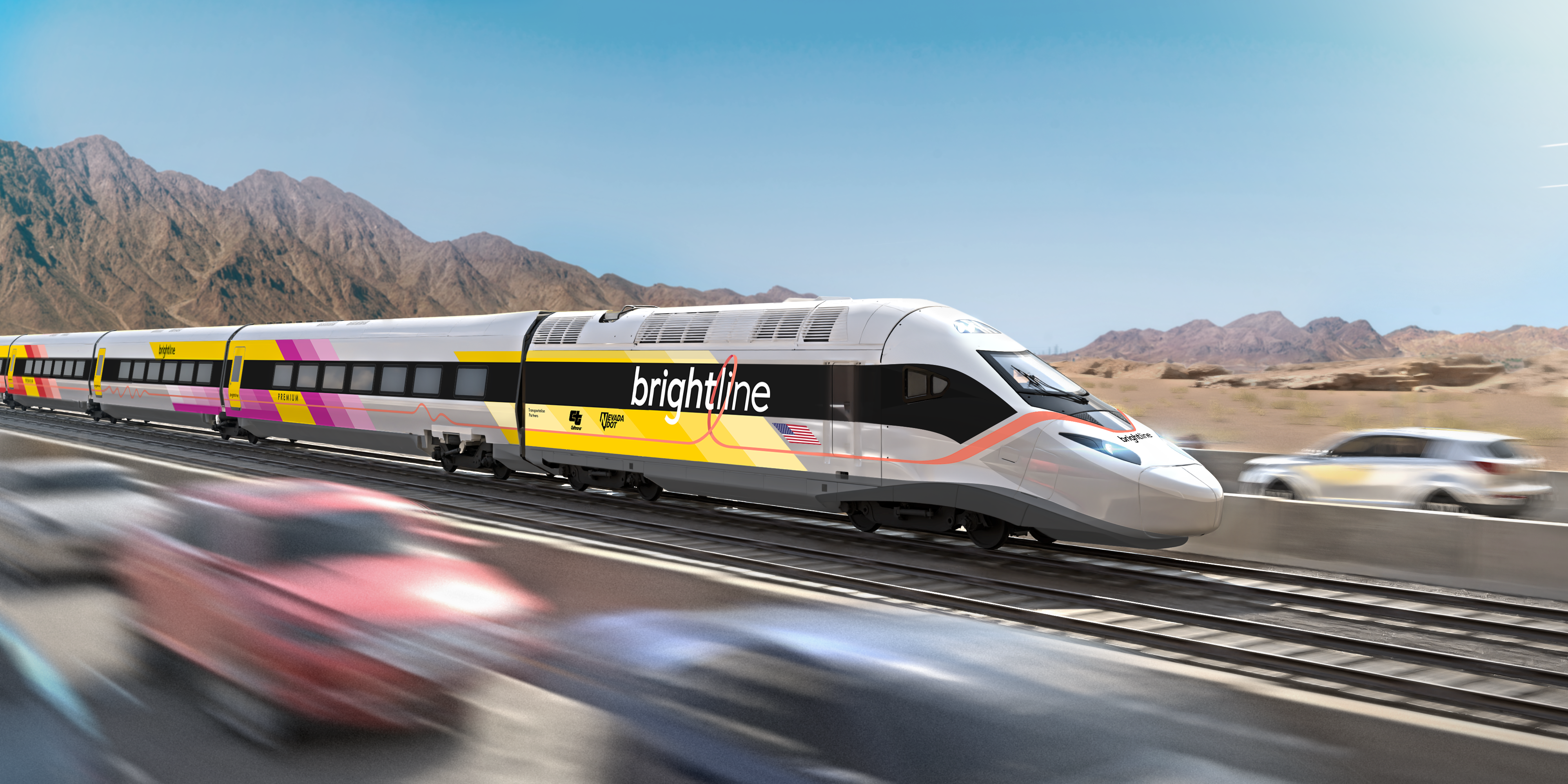IBEW members will soon be on the job building a high-speed rail network linking Las Vegas and Southern California following a $3 billion federal grant announcement on Dec. 5.
Brightline West officials said the 265-mile line will open by the 2028 Summer Olympics in Los Angeles. Federal support will be critical to the total $12 billion price tag.
An agreement between Brightline West and the High-Speed Rail Labor Coalition ensures the employment of union members at every stage of the project, from construction to operation and maintenance. That commitment was a prerequisite for the $3 billion grant through the U.S. Transportation Department from the Bipartisan Infrastructure Law, according to the historic Memorandum of Understanding brokered between rail labor and Brightline. It is one of history’s biggest funding awards for a privately developed project.
“Not only does this announcement represent an important milestone for high-speed rail in America, it’s a vote of confidence in the professionalism of skilled labor and a major boost for the community-sustaining quality union careers, the foundation of the middle class and the heart of the Biden-Harris administration’s agenda,” said IBEW International President Kenneth W. Cooper.
The MOU requires that Brightline West and any contractors that it uses to perform traditional railroad work shall be subject to statutory coverage under the Railway Labor Act (RLA), Railroad Unemployment Insurance Act (RUIA) and Railroad Retirement Act (RRA) and honors workers’ rights to organize through neutrality, including access to property for organizers and hybrid card check certification of union representation.
According to the deal, Brightline West modeled its commitment to negotiate collective bargaining agreements with participating unions on Amtrak’s Northeast Corridor contracts.
The High-Speed Rail Labor Coalition represents more than 160,000 members in 13 unions, including the IBEW, working for freight, regional, commuter and passenger railroads in the United States. It was critical in shaping the Brightline West partnership and securing the funding.
Brightline West anticipates its trains will travel speeds exceeding 186 miles per hour, bringing passengers from the Las Vegas strip to Southern California’s Metrolink service in Rancho Cucamonga in just over two hours.
Project labor agreements will fully protect workers, and the RLA jurisdiction reinforces Brightline’s commitment to neutrality during any organizing campaign.
By the numbers
The Brightline West project will:
- Create more than 35,000 construction jobs and 1,000 permanent jobs, with union members likely to number 10,000 during construction
- Generate more than $10 billion in economic revenue
- Reduce highway congestion by diverting millions of cars to a faster, more efficient transportation option:
- Removing 3 million vehicles and 700 million vehicle miles from the highway annually
- Eliminating more than 400,000 tons of CO2 emissions
Brightline, the only privately owned and operated intercity passenger railroad in the United States, has operated an intercity rail system connecting population centers in South Florida since 2018.
The Brightline award is among the $8.2 billion announced on Dec. 8 for ten coast-to-coast passenger rail projects.
“Today, the Biden-Harris administration takes another historic step to deliver the passenger rail system that Americans have been calling for – with $8.2 billion for faster, more reliable, expanded train service across the country,” said U.S. Transportation Secretary Pete Buttigieg. “With this funding, we’ll deliver America’s first high-speed rail on a route between Southern California and Las Vegas, complete major upgrades for riders in Virginia, North Carolina, Illinois, Pennsylvania, Maine, Montana, and Alaska, and announce a comprehensive plan that makes it easier to expand passenger rail lines in 44 states.”
Link to this post here.



